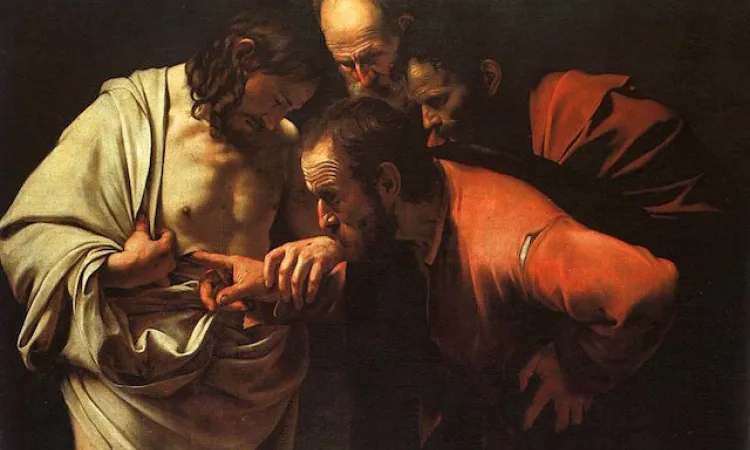Only one week before, in an act of profligate love, Mary had poured out costly perfume on Jesus' feet. 'What a waste,' sneered Judas. But Jesus told Judas to his face that he needed human consolation before his passion and death.
The gardener of course is Jesus in disguise, and the encounter between them paints a lovely picture. Jesus calls out, "Mary." The voice stills her. His intonation is filled with consolation. Her instinct is to touch him, but this cannot be. A new relationship now exists between them. She hurriedly goes to the disciples to announce what the Lord has done for her … not unlike Mary of Nazareth who had visited her cousin Elizabeth.
Do we wonder that Magdalene's name has been placed at the head of the named women in the Gospels? She is the "apostle to the apostles" signaling her special place among them all. The Johannine encounter between Jesus and Mary Magdalene parallels the words of Isaiah 43:1:"Do not be afraid, for I have redeemed you. I have called you by name; you are mine."
Contemplation as Event
More in The Way of Beauty
In prayer, try role playing and repeat what the disciples said in a cynical tone. Utter the harsh words, 'I will not believe.' For a moment or two, it will align you with the thousands who refuse to believe in God, not to mention the Lord's Resurrection. Then, recreate this scene and listen for Jesus to call your name.
It may not be possible to share the news of the Risen Christ in the way Magdalene did. But sensitivity to others brings possibilities that are perhaps more creative. The time may come when others, instead of finding in you an indifferent Catholic or a mere cultural Catholic, they will discover a disciple and companion of the Lord. For most of us, it means touching others quietly, without hesitation, and with a joyful faith.
You and I live in a world that often shouts the harsh words, 'We will not believe.' You and I must pray, "Lord, we believe; help our unbelief" (Mk 9:24). The pearl of great price-our faith-is not difficult to lose.
The limerick below summarizes this essay "with a twinkle in its eye." Rhyme seems to have been invented early in the Christian era, probably by priests of the Alexandrian church so that parishioners could remember church teachings . . . it can become inspiration-awakening. A good limerick should sound like someone talking."
THE RESURRECTION
Luke 24:1-12
At the dawn of the week's first day,
(Column continues below)
Subscribe to our daily newsletter
Women came with spices which they
Had meant for the tomb,
Christ's burial room:
What they saw was a stone rolled away.
Having entered, the three looked around,
But the body was not to be found.


